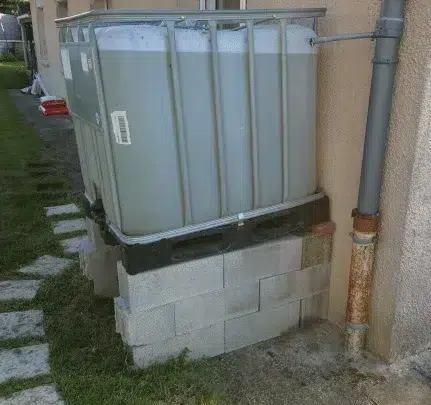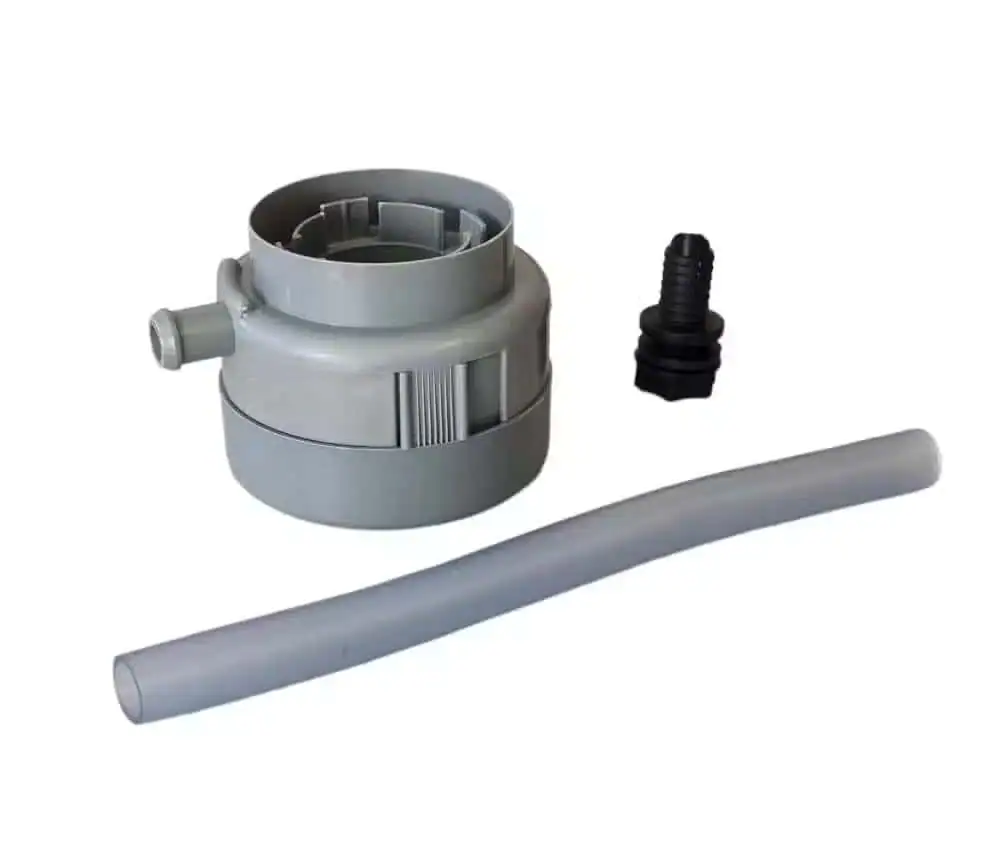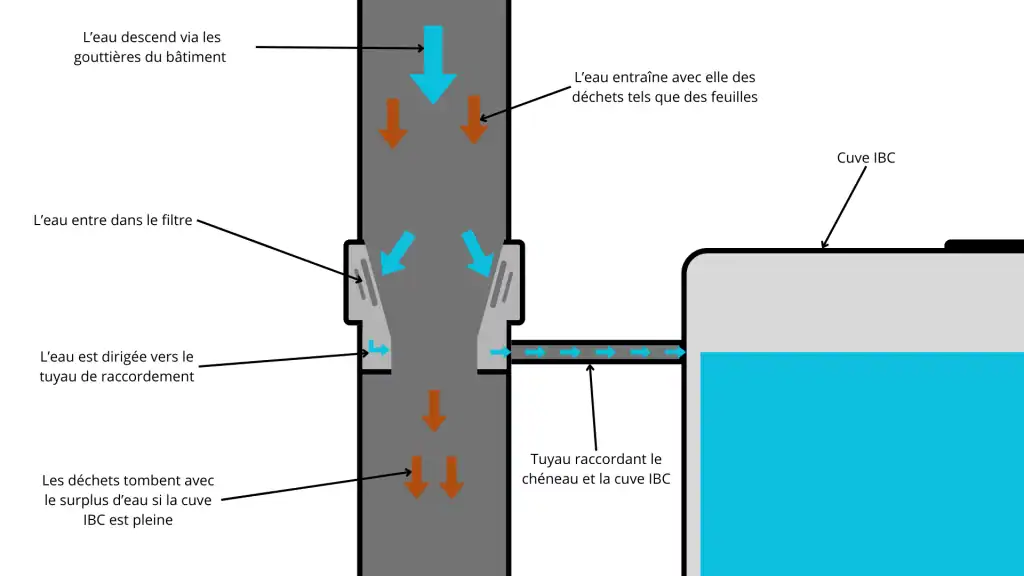Reusing rainwater is an ecological and economical solution that is increasingly being adopted by private individuals and businesses. It helps to reduce drinking water consumption, cut water costs and limit environmental impact. Using IBCs makes it easy to collect and store rainwater for a variety of uses, while optimising the space available.

Why reusing rainwater is a good idea
Harvesting rainwater is not just an ecological gesture: it’s also a practical way of saving money on your water bill and reducing the pressure on natural resources.
The main advantages:
- Save drinking water: every litre of rainwater used reduces dependence on the public network.
- Environmental protection: less groundwater and river extraction, less drinking water treatment and distribution.
- Soft water with low limescale: ideal for watering plants, filling fountains or washing surfaces, but also for certain household appliances.
Possible uses for rainwater
Rainwater can be used both indoors and outdoors, depending on requirements and the volumes collected.
Outdoor use :
- Watering the garden and plants.
- Vehicle washing.
- Cleaning terraces, paths and garden tools.
- Filling swimming pools, ponds and fountains.
Indoor use :
- Filling toilet flushes.
- Washing clothes after appropriate treatment.
- Cleaning of floors and other surfaces.
By using IBCs, it is possible to store large quantities of water and organise its withdrawal for different uses, making the practice both practical and efficient.
How to recover rainwater with an IBC tank

Rainwater is generally collected via a gutter that connects your gutter to the tank. IBC tanks are ideal because they combine high capacity, sturdiness and ease of installation.
Step 1: Preparing the IBC tank and gutter
- Place the tank on a flat, stable surface to prevent it from tipping over.
- Install a filter on the gutter, at the same height as the tank is filled.
- Cut the gutter to fit the collector gutter.
- Fit the manifold, making sure it is watertight.
Step 2: Connecting the IBC tank
- Connect the manifold to the tank using a hose on the side of the IBC.
- Check that all connections are tight.
- Never connect the hose to the top of the tank to prevent it from overflowing or leaking.
Step 3: Using the system
- The rainwater flows through the gutter, passes through the filter and fills the tank.
- If the tank is full, the excess water is automatically returned to the gutter via the overflow.
- A tap at the bottom of the tank makes it easy to draw off water.

Tips for optimising rainwater harvesting
To maximise the efficiency of your system :
- Multiplying IBCs: Thanks to a connection kit, you can connect several tanks in series to increase storage capacity.
- Stability: make sure all tanks are placed on a flat, stable surface.
- Convenient access: a tap at the bottom of each tank makes it easy to draw off and empty. There are many different types of tap, so you’re sure to find one that’s just right for you!
- Protect the water: cover the tank to limit evaporation and prevent the proliferation of algae or insects with protective covers, or adopt the black IBC tank.
- Regular maintenance: check and clean the gutter filter to ensure water quality and prevent blockages.
The long-term benefits of using IBCs
Adopting rainwater harvesting with IBCs offers long-term benefits:
- Sustainable savings: significant reduction in drinking water consumption and water bills.
- Environmental sustainability: contributing to the preservation of natural resources and reducing discharges into the public network.
- Flexibility and adaptability: IBC tanks can be moved, linked together or used for different purposes depending on the season and requirements.
- Quick and easy investment: no complex work required, can be installed by yourself or with a minimum of help.
Conclusion: adopt the IBC for rainwater harvesting
Rainwater harvesting using an IBC is a practical and effective way of reducing water consumption, protecting the environment and saving money. By installing a properly-equipped gutter, this practice becomes simple and accessible to everyone.
Investing in an IBC means taking a concrete step towards sustainability, while benefiting from flexible storage and optimum use of the water collected. Whether for the garden, outdoor surfaces or certain indoor uses, IBC tanks offer the ideal solution for combining ecology and practicality.

